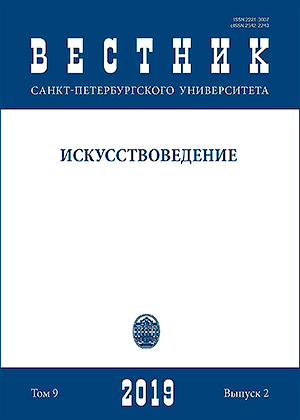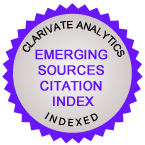Флора, Лаура и другие: аллегоризированный портрет «красавицы» в искусстве раннего венецианского чинквеченто
DOI:
https://doi.org/10.21638/spbu15.2019.208Аннотация
Основную задачу статьи составляет описание и изучение заметного явления художественной культуры Венеции эпохи Возрождения, так называемого портрета «красавицы». Актуальность исследования, до сих пор не предпринимавшегося в отечественной науке, состоит в том, что оно, рассматривая такие «идеальные портреты» в качестве целостного историко-художественного феномена со своей исторической эволюцией и социокультурным фоном, также способно пролить свет на смысловое значение ряда отдельных произведений, изучаемых в общем контексте. Зарождение типологической разновидности портрета «красавицы» связано с наступлением новой фазы в развитии ренессансного искусства в Венеции — Высокого Возрождения, у истоков которого располагается творческая деятельность Джорджоне и скульптора Туллио Ломбардо. Их произведения, рельеф «Портрет молодой пары» Туллио Ломбардо и картина Джорджоне «Лаура», сыграли определяющую роль в сложении его композиционной формулы и основ содержательной программы, которая характеризуется сложностью и многозначностью замысла. Воплощаясь в формате ренессансного портрета, он строится на развитии сюжетных мотивов, почерпнутых из произведений античной и ренессансной литературы. Дальнейшая эволюция жанровой формы портрета «красавицы» была осуществлена в работах следующего поколения венецианских художников, главным образом у Тициана, который выполнил ряд его иконографических версий, по своему содержанию связанных с библейской и классической сюжетной тематикой. Под влиянием Тициана портрету «красавицы» также отдали дань Пальма Веккио, Парис Бордоне, Бернардино Личинио, своими произведениями внесшие существенный вклад в развитие его художественной типологии. В дальнейшем решающее воздействие на развитие портрета «красавицы» оказывала деятельность Тициана-портретиста, что привело к обогащению его образно-стилистического строя новыми чертами аристократической элегантности и утонченности, нашедшими выражение в произведениях Паоло Веронезе. Однако проникновение новых образно-стилистических мотивов привело к постепенному видоизменению эстетической природы портрета «красавицы», что имело следствием его перемещение на периферию художественного процесса в конце XVI в.
Ключевые слова:
искусство Возрождения, Венеция, портрет, портрет «красавицы», Туллио Ломбардо, Джорджоне, Тициан, Паоло Веронезе
Скачивания
Библиографические ссылки
References
Загрузки
Опубликован
Как цитировать
Выпуск
Раздел
Лицензия
Статьи журнала «Вестник Санкт-Петербургского университета. Искусствоведение» находятся в открытом доступе и распространяются в соответствии с условиями Лицензионного Договора с Санкт-Петербургским государственным университетом, который бесплатно предоставляет авторам неограниченное распространение и самостоятельное архивирование.







